1756 Slender and chiselled lines
Time Out of Time
by Arleen Paré
Qualicum Beach: Caitlin Press, 2022
$20.00 / 9781773860794
Reviewed by Marguerite Pigeon
*
 Victoria poet Arleen Paré opens her slim volume, Time out of Time, with a note explaining the genesis of her project: the collection is a tribute to the Lebanese-American poet Etel Adnan. But we might more accurately say that Time out of Time is a leap of faith, because in this book Paré extends herself creatively and emotionally, as if leaping into the dark across language, experience and, yes, time, to inhabit Adnan’s poetics.
Victoria poet Arleen Paré opens her slim volume, Time out of Time, with a note explaining the genesis of her project: the collection is a tribute to the Lebanese-American poet Etel Adnan. But we might more accurately say that Time out of Time is a leap of faith, because in this book Paré extends herself creatively and emotionally, as if leaping into the dark across language, experience and, yes, time, to inhabit Adnan’s poetics.
Paré is a Governor General’s Award winning poet (2014) who has written elegantly on themes of loss and change. In He Leaves his Face in the Funeral Car (Caitlin, 2015), many of the poems deal directly with death, including her mother’s, while others speak forcefully on social issues like psychiatric abuse and domestic violence. Throughout, Paré’s confident feminist lyric is front and centre. She is an established poet who knows her voice.
Here, she quiets that voice to speak in an unfamiliar poetic tongue. Time out of Time is made up almost entirely of short, numbered poems. In place of the longer, lyrical lines in He Leaves his Face, we find slender lines assembled into spare, intimate poems that have been chiselled into small objects (“enough cut // enough cut” Paré writes in poem 2, hinting at the work of this).
Paré is composing her book in the dead calm of Covid times and amidst escalating climate change, and the poems echo with a yearning for connection. In poem 1, Paré, out on an errand, starts Annand’s book, entitled Time:
the first Time is
in an empty bank 2 p.m.
first page
masked
the Pandemic
empties out all ambient noise
the hush
the pages make as they turn
untiming
the glass doors monumental
onto the unpeopled street
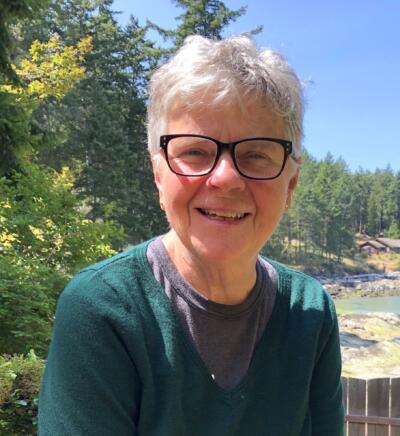
Something “monumental” has occurred for Paré while reading Adnan, turning desolate reality into a near-religious moment. But what? It would be too easy to say she’s fallen in love with Adnand. While lesbian themes and commitments pulse through both poets’ works and structure Paré’s core concerns (like visibility, non-dualist thinking, and the history, bodies and voices of women), something even deeper – cosmic — is in play. At the very moment when Paré’s world seems to be shrinking and burning, Adnan’s work flings open a door. There, in a wide open space unconstrained by lyricism, are language, effervescence, oblique connection. In poem 23, Paré is:
pursuing this trail
these traces your perfumed vernaculars
dialects this dimension of life
concerned mainly with dialogues
of candid connection
a line to
a line from
geometries of unhurried care
lineal arrangements
cornered and squared
Much of what Paré loves about Adnan’s fine geometries comes from what that poet left off the page: punctuation, confession and direct address of social realities — in short, many of Paré’s own styles and preoccupations. In poem 22:
to know so little of interpretation
there were no birds
no murmurations
inside these perfected pages
no roses or grape lilacs no floribunda at all
no ribbons neither red ribbons nor blue
only words in their best untitled order
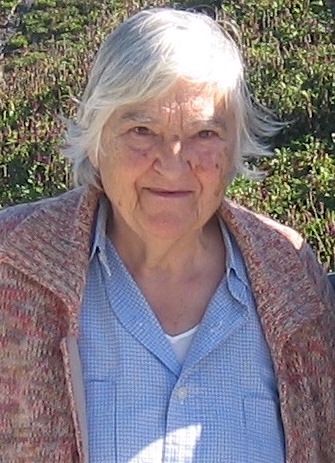
Paré is also enthralled by Adnan’s way of treating experience, including her own advanced age, without the slightest realist impulse. Most of the poems in Time (published in English to great acclaim in 2019, and known as Fil du temps in the original French) were written when Adnan was in her late 70s and 80s (she died in 2021). They are divided into five- and six-line units that look like stanzas but that are actually sense units onto themselves — pearls, we might call them — strung together while retaining their individuality. The reader can run them through the mind’s fingertips very playfully, admiring their brilliance, but if we look for obvious links between them, or if we try to tie them to a particular fact, their shine dulls.
Adnan, whose background blended Turkish, Greek, and Albanian ancestry and experience, grew up in Beirut before moving to Paris and the US. She studied widely and her education in French fostered a symbolist drive in her work: sharply drawn, her poems include dream-like imagery that arises and falls away. Adnan is elusive, witty, and womanly, with the perceptive eye of someone with a foot in many worlds (she also painted). Despite its ambiguity, her poetry speaks in plain diction with great clarity, as in these lines from “At 2 o’clock in the afternoon” (translated by Sarah Riggs):
writing comes from a dialogue
with time: it’s made
of a mirror in which thought
is stripped and no longer knows
itself
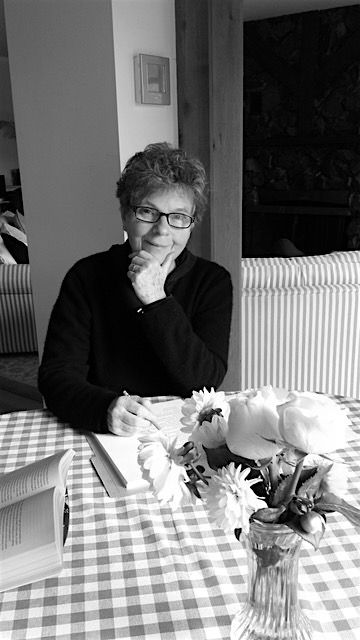
Adnan’s poetry refuses the linear storytelling impulse that can haunt “thoughtful” lyrical poetry; perhaps the political histories of Lebanon (where she wrote journalism) and colonizing France (where she protested the Algerian occupation) bred a distrust of realism and poetry that whets an appetite for more and more confession.
Paré, a perceptive observer of culture and politics, seems to be wrestling with these very questions in a post-Trump, post-anti-vax world where the onslaught of story, counter-story and news have turned time nightmarish. In poem 19, Paré admits that: “the clamour of story // exhausts the worldwide // spacetime” . Testing out a new poetic tongue is a risk, sure, but in Time out of Time, it becomes a political act by a political poet — a new means for Paré to challenge time’s obvious storylines.
In keeping with lesbian poetics that keep the body in the picture, Paré’s project is also a sensual one, as she vibrates with the proximity to another poet’s voice. In poem 15, she tells us:
I take you to bed more than once
lights on
where else can be Time
And in poem 38:
With your words
Your philosophical contours and colours
I confess my fixation
Try as she might, Paré cannot be divorced from confession. But she is no prisoner to it, no victim of story. In poem 39, she addresses Adnan once more, admiring Adnan’s peripatetic life, her eclectic artistry and glamour, but also asserting her own value:
I too ask questions I value words
If you were a flower you would be a bird
There is humour here, and challenge. If Adnan represents a twentieth century in which lesbian women broke new poetic and cultural ground amidst immigration, cosmopolitanism and globalism, Paré is a poet of this time, grounded on the land of North America’s west coast, wrestling with poetry’s role, courageous enough to risk a hybrid patois: lyrical and symbolist, realist and mysterious.
Readers should keep open an eager ear for Paré’s blended voice in future work.
*
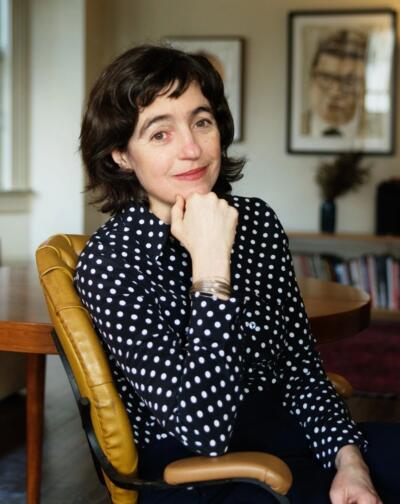
Marguerite Pigeon writes poetry, fiction and reviews. Her latest publication, a book-length poem called The Endless Garment (Wolsak & Wynn) was named to The Globe and Mail’s Top 100 books list for 2021. Originally from Northern Ontario, she lives in Vancouver, where she runs a small editing and writing business, Carrier Communications. Editor’s note: Marguerite Pigeon’s The Endless Garment is reviewed here by Heidi Greco.
*
The British Columbia Review
Publisher and Editor: Richard Mackie
Formerly The Ormsby Review, The British Columbia Review is an on-line book review and journal service for BC writers and readers. The Advisory Board consists of Jean Barman, Wade Davis, Robin Fisher, Barry Gough, Hugh Johnston, Kathy Mezei, Patricia Roy, Maria Tippett, and Graeme Wynn. Provincial Government Patron (since September 2018): Creative BC. Honorary Patron: Yosef Wosk. Scholarly Patron: SFU Graduate Liberal Studies.
“Only connect.” – E.M. Forster


















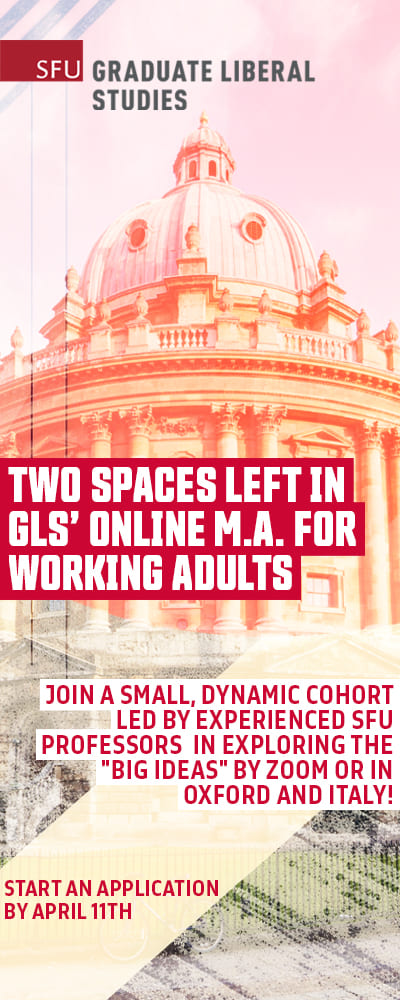












5 comments on “1756 Slender and chiselled lines”